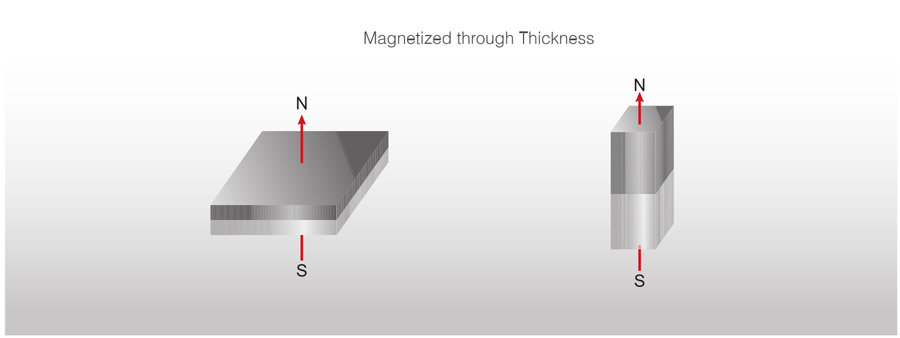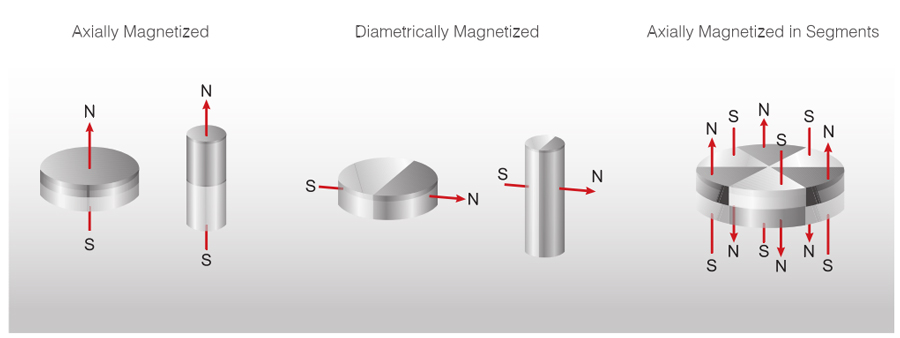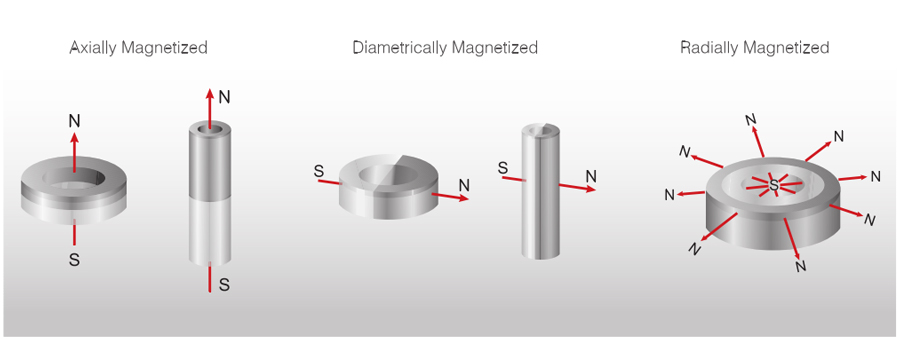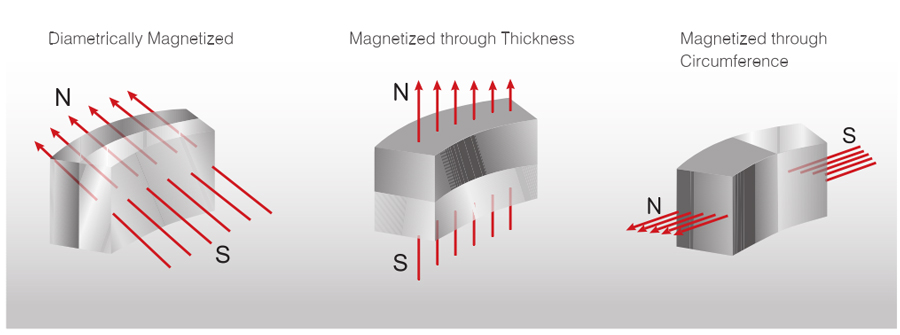Sintered neodymium magnet is the strongest magnetic material commercially available today. It is largely made of alloy of neodymium, iron and boron, and the chemical formula is Nd2Fe14B. Sintered NdFeB neodymium magnet exhibits high magnetic energy product in small size with high coercive forces. Examples of applications include permanent magnet motors, loudspeakers, magnetic separators, wind power generators, computer hard drive, and MRI devices.
High Coercive Force
High Consistency
Low Reversible Temperature Coefficient
Low Weight Loss
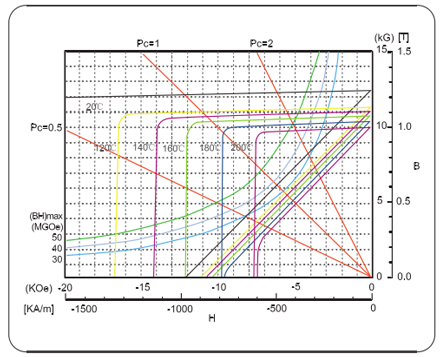
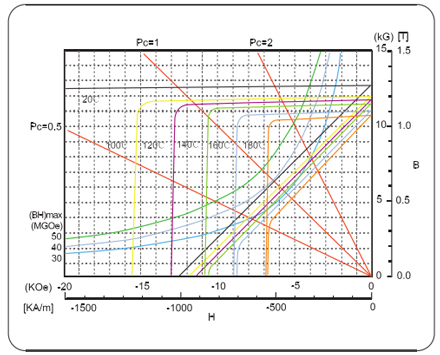
N52 Demagnetization Curves at Different Temperatures N50M Demagnetization Curves at Different Temperatures
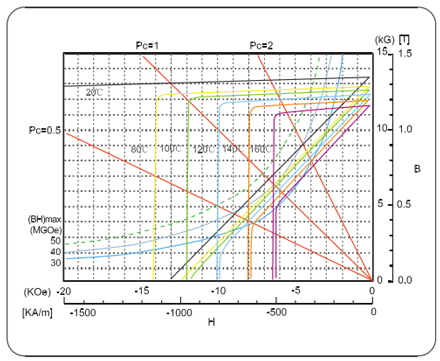
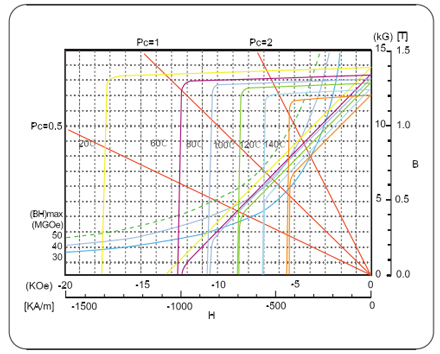
N48H Demagnetization Curves at Different Temperatures N45SH Demagnetization Curves at Different Temperatures
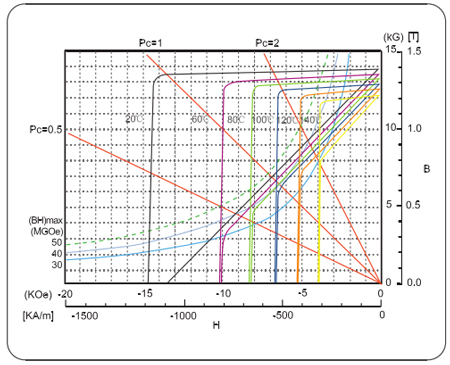
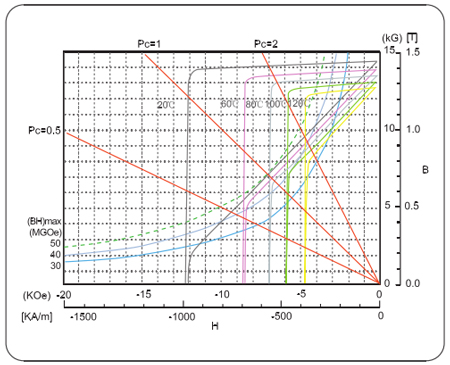
N40UH Demagnetization Curves at Different Temperatures N38EH Demagnetization Curves at Different Temperatures
The Grade of a magnet generally indicates how “strong” a magnet material is, which is measured by the Maximum Energy Product. The energy product is commonly specified in units of Gauss Oersted. The higher the grade the “stronger” the magnet. The grade also tells the temperature rating of a magnet material. Neodymium magnets have different heat tolerances which determine their maximum working temperature. As the heat tolerance increases the maximum available flux density decreases.
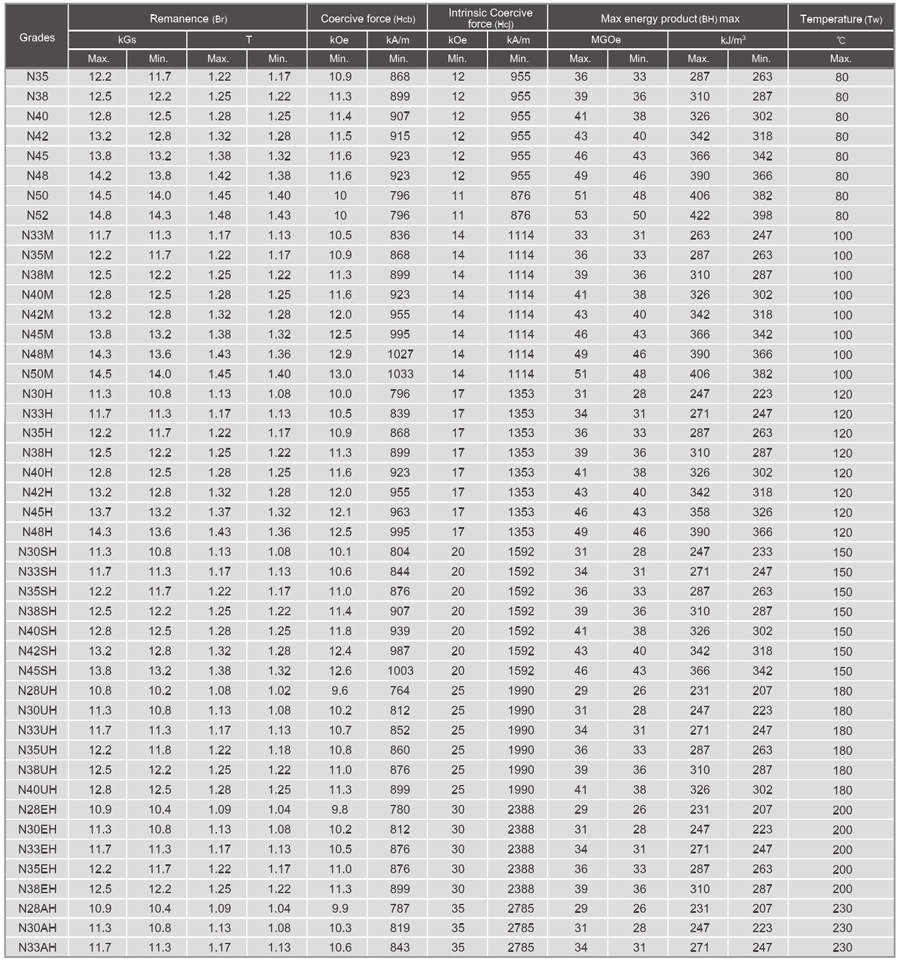
Notes:
1. The above-mentioned data of magnetic parameters and physical properties are given at room temperature(20℃±2).
2. The maximum service temperature of magnet is changeable due to the ratio of length and diameter, coating and environmental factors
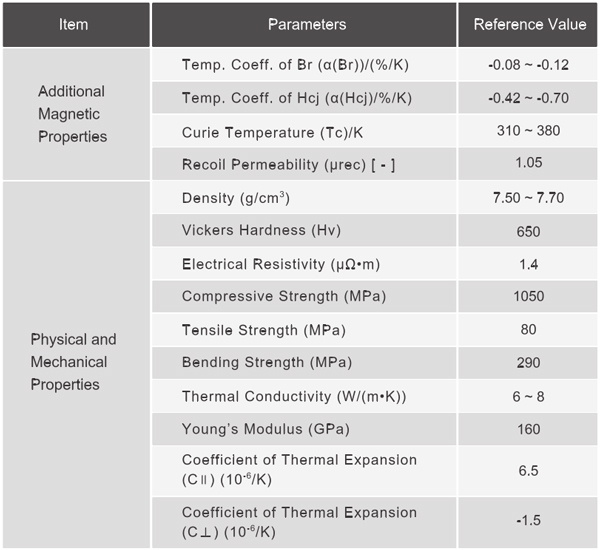
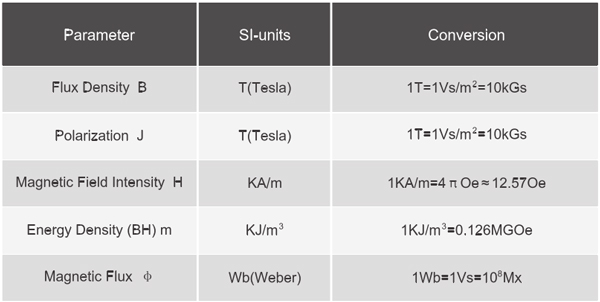
As Neodymium magnet is prone to corrosion, it is usually preferable for the magnet to be coated for protection. Among a variety of options for coatings, nickel and nickel-copper-nickel are the most commonly used, making the magnet more corrosion resistant and durable.
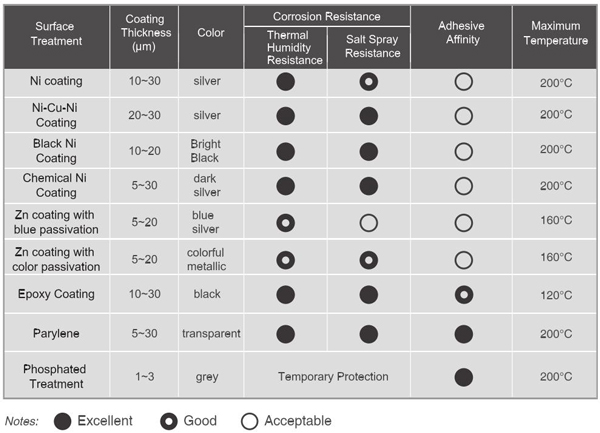
Magnets can be delivered magnetized and un-magnetized. Some production methods require the magnets being incorporated into assemblies in a un-magnetized state and magnetized later once the assembly is completed. There are various magnetic orientations available for different shapes of magnets.
